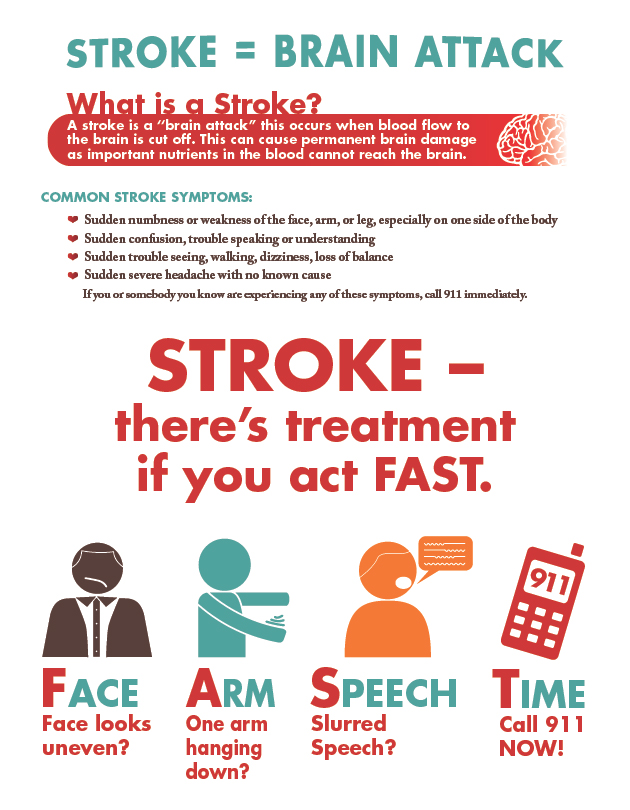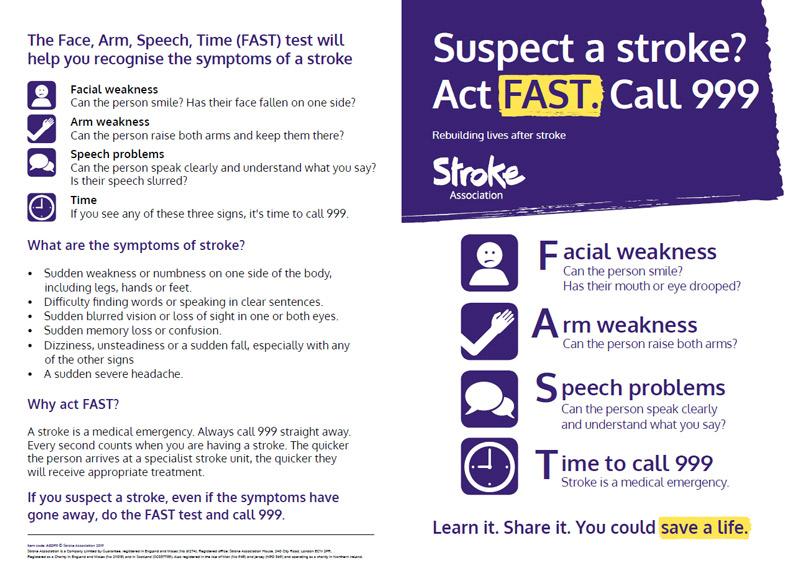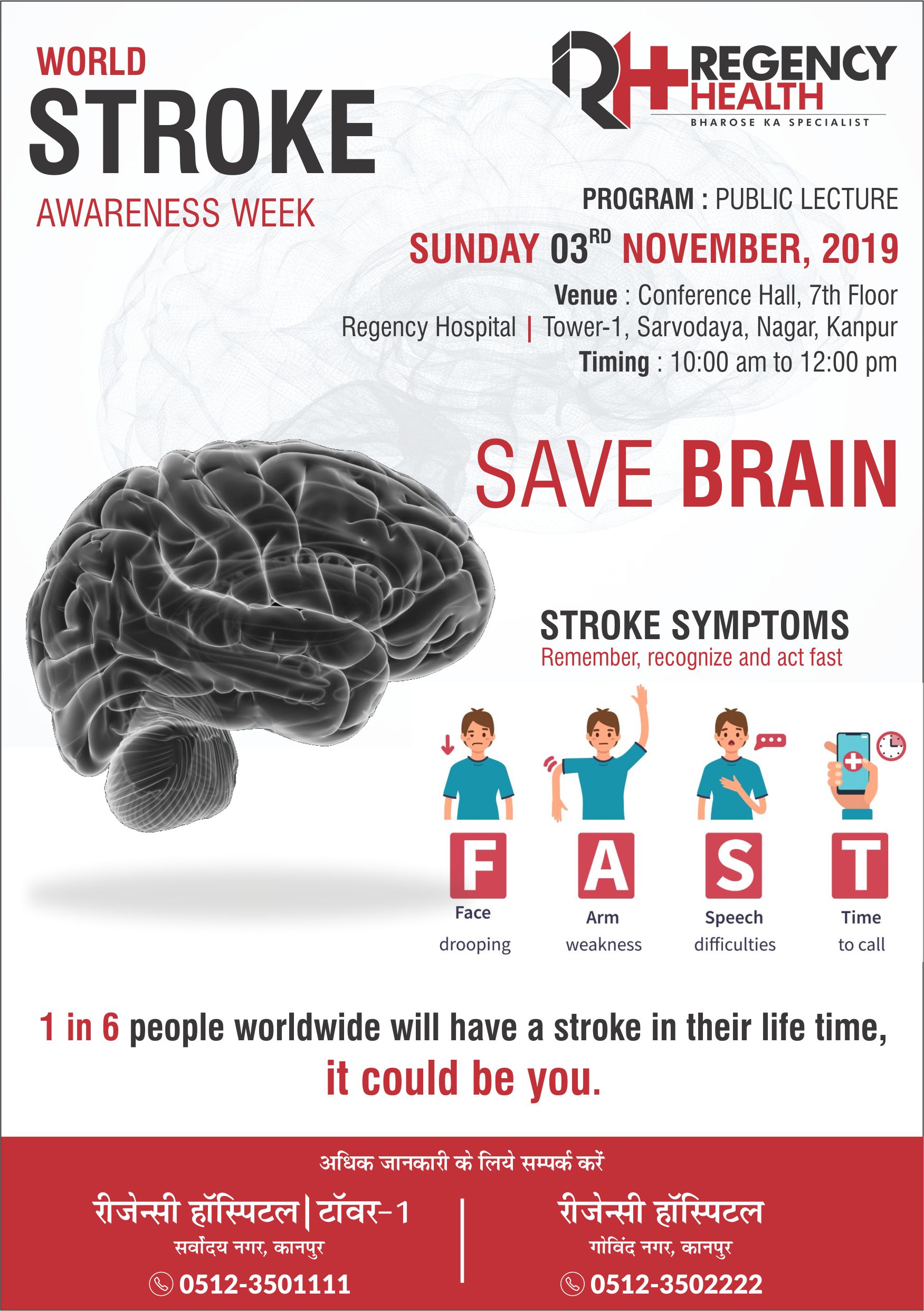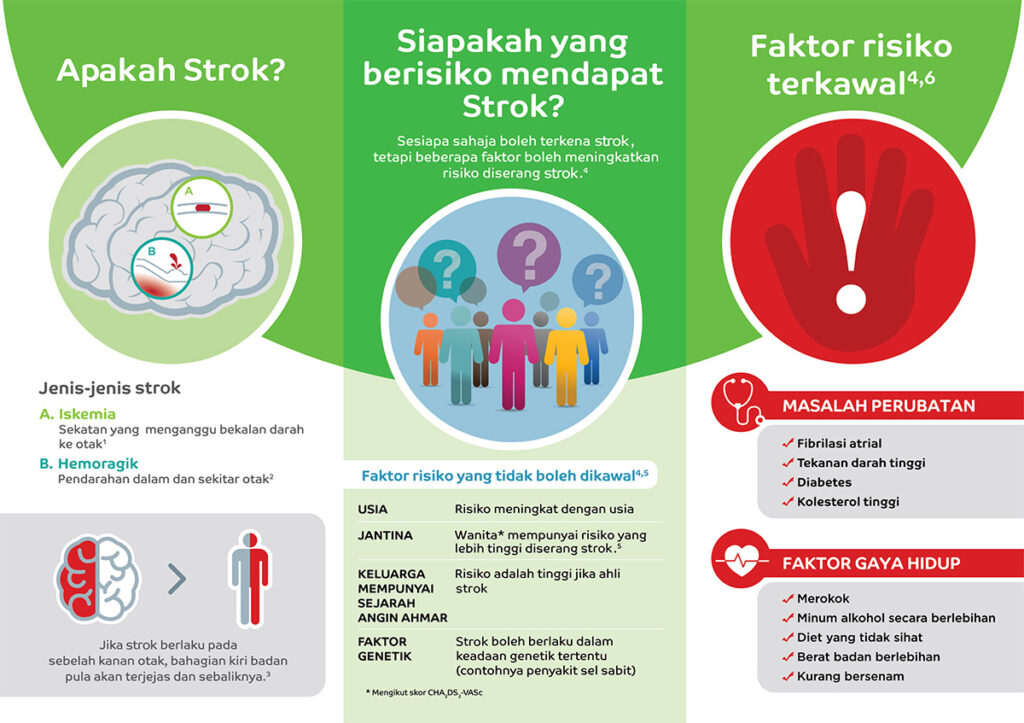
Stroke Risk Factors, Red Flags and Prevention University of Kentucky College of Health Sciences
Note about tooltip offset. Leaflet takes two options in consideration for computing tooltip offsetting: the offset Tooltip option: it defaults to [0, 0], and it's specific to one tooltip. Add a positive x offset to move the tooltip to the right, and a positive y offset to move it to the bottom. Negatives will move to the left and top.

FAST A5 leaflet Stroke Association shop
Five Key Facts About Stroke F.A.S.T. Infographic Acute Ischemic Stroke Infographic Warning Signs in Chinese (PDF) Looking for Stroke Information? If you are a stroke survivor, caregiver or a family member looking for information and support, please connect with our trained stroke specialists through Stroke Family Warmline.

Leaflet Stroke PDF
A common cause of stroke is a blood clot that forms in a brain blood vessel (artery). Immediate treatment may include a clot-busting medicine to dissolve the blood clot.. Medication may be advised to reduce any risk factors for having a further stroke (as discussed later in this leaflet). For example, medication to lower a raised sugar level.

Be Aware! Strokes Can Happen to Anyone Infographics
stroke survivors, you may also want to direct family, friends and carers to My Stroke Guide. Theres a dedicated section where they can find out more about stroke, and how they can best support a loved one as well as reduce their own risk of stroke. Videos There are over 200 helpful videos covering a range of topics including fatigue, aphasia and

Leaflet Stroke PDF
A stroke happens when the flow of blood to part of the brain is cut off. This is normally due to a clot in a blood vessel or a rupture which stops the flow of blood getting to the brain. The brain needs the oxygen in the blood to work properly.

First aid for stroke flat vector brochure template by The EpicPxls
Medicines called anticoagulants can be used to reduce the risk of a blood clot and so reduce the risk of stroke. Anticoagulants work by prolonging the time it takes for blood to form a clot. Some people call anticoagulation 'thinning the blood', although the blood is not actually made any thinner. Anticoagulants reduce the risk of stroke by.

Signs of Stroke Trifold Brochure Free Brochure Template
What is a Stroke? Blood vessels that carry blood to the brain from the heart are called arteries. The brain needs a constant supply of blood, which carries the oxygen and nutrients it needs to function. Specific arteries supply blood to specific areas of the brain. A stroke occurs when one of these arteries to the brain is either blocked or bursts.

Leaflet Rehabilitasi Stroke
Stroke - causes, signs and symptoms. A stroke is a medical emergency. It happens when the blood flow to part of your brain is disrupted. This can cause your brain cells to become damaged or die. If you think you or anyone else may be having a stroke, call 999 immediately.

World Stroke Awareness Regency Healthcare Ltd.
Stroke - your quick guide. Leaflet / flyer | 16 pages. This short illustrated leaflet explains the symptoms, causes and types of stroke. It tells you what you might expect from your recovery and explains how stroke and coronary heart disease are linked. It's suitable for you if you've had a stroke or have been told you are at risk of having one.

AHA Infographic Stroke By The Numbers
If your stroke damages the parts of your brain that do this, then this will affect your ability to swallow. Swallowing problems are also known as dysphagia. Other effects of stroke can make eating, drinking and swallowing difficult too. If your arm or hand has been affected by your stroke, you may not be able to use a spoon or a cup properly.

Stroke Signs, Symptoms and Complications Caregiver Tips
A hemorrhagic stroke is when a blood vessel in your brain breaks open or ruptures, causing dangerous bleeding. An aneurysm is when a blood vessel in your brain bulges or swells outward in a way that it shouldn't. Brain aneurysms can lead to hemorrhagic strokes if they leak or rupture, but they aren't the same thing.

Leaflet Stroke PDF
Subclinical leaflet thrombosis can be detected by functional cardiac computed tomography angiogram (CTA) as hypoattenuating leaflet thickening (HALT) and reduced leaflet motion (RLM) 1 and is present in ≈10% to 20% of patients undergoing transcatheter aortic valve replacement and surgical aortic valve replacement. 2-5 The impact of HALT on.

Malaysia Stroke Council
1 Answer Sorted by: 12 You can specifiy the stroke weight with the weight argument: library(leaflet) leaflet() %>%

A Complete Guide to Strokes Heavenly Care Home Health
The first systematic investigation into possible subclinical leaflet thrombosis of TAVI valves was reported in 2015. 10 The PORTICO IDE trial protocol mandated CT imaging in a subset of patients to evaluate the stent frames for fractures, and reduced leaflet motion was noted on the CT of a patient who suffered a stroke after TAVI. This finding.

Leaflet Stroke
Ischaemic stroke guide Resource type Information leaflet Publication type Stroke information Around 85% of strokes are due to a blocked blood vessel in the brain. This type of stroke is called an ischaemic stroke, sometimes known as a clot.

Leaflet Stroke PDF
Information leaflet Publication type Publication A transient ischaemic attack or TIA (also known as a mini-stroke) is a major warning sign of a stroke. This guide explains what you can do to reduce your risk of a stroke. A TIA is the same as a stroke, except that the symptoms last for a short time.